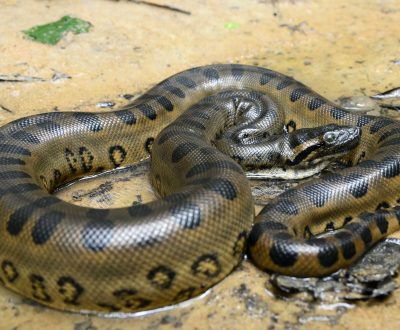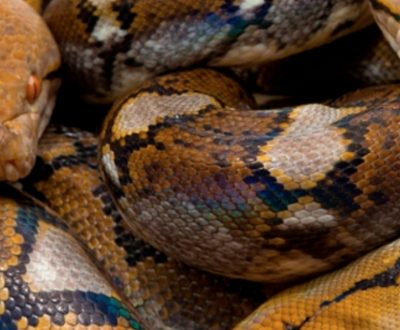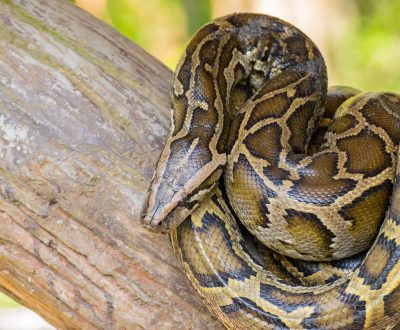General information on snakes
Although they may not look like it, snakes are actually vertebrates! Some species, such as pythons, even have vestigial hind legs. Snakes are all predators: 1000 of the 3000 species are poisonous. Most non-venomous snakes are called “constrictors”: they coil around their prey to smother it.
Reproduction in snakes is rather unique: males take part in ritual dances to impose their dominance; after mating, depending on the species, the female will either give birth to self-sufficient young or lay eggs. Some species, such as pythons, have the ability to “incubate” their eggs.
As predators, snakes’ senses are particularly important: they have reasonable eyesight and some species have very large eyes for hunting by sight.
Snakes have no external ears so cannot hear sounds, but they have internal ears which they use to feel vibrations in the ground.
A snake’s sense of smell is essential; its forked tongue collects odour-causing particles. This tongue is used to search for smells on the ground or in the air. Prey? Predator? A fellow creature? The snake finds out using its Jacobson’s organ.
A sixth sense… Some species of snakes (pythons, rattlesnakes and others) have heat-sensitive pits by their mouths which work as heat detectors. These animals can surprise their prey in complete darkness if these prey release heat (birds, mammals, etc.).
Keep cool, sharpen your senses and take a closer look at Python Island.















